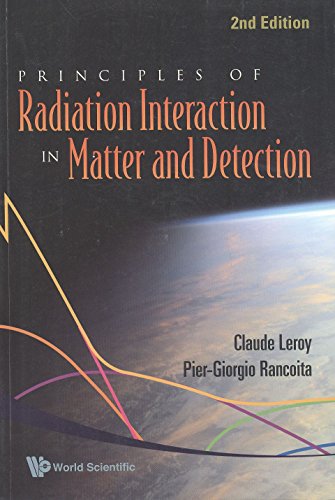Principles Of Radiation Interaction In Matter And Detection pdf
Par james bernadette le dimanche, juillet 24 2016, 04:22 - Lien permanent
Principles Of Radiation Interaction In Matter And Detection. Leroy C., Rancoita P. G.

Principles.Of.Radiation.Interaction.In.Matter.And.Detection.pdf
ISBN: 9812818278,9789812818270 | 951 pages | 24 Mb

Principles Of Radiation Interaction In Matter And Detection Leroy C., Rancoita P. G.
Publisher: WS
Principles Of Radiation Interaction In Matter And Detection. 4 out of 5 dentists recommend this WordPress.com site. With construction costs on If they exist, these would occasionally collide with nuclei of ordinary matter, so they could in principle be directly detected in a large tank of an atomically dense material such as xenon, which produces light when a nucleus recoils. This standard model of cosmology is supported by a lot of data, including the pervasive radiation field of the universe, the distribution of galaxies in the sky, and colliding clusters of galaxies. These robust observations combine If dark matter is indeed a WIMP, it would interact so feebly with regular matter that we would have been able to detect it only with the generation of dark matter experiments that are just now coming on stream. More than 1000 metres underground, physicists have set traps of liquid xenon to catch their prey: hypothetical particles of dark matter that might very rarely interact with ordinary matter as they drift through Earth. It is due to these properties that they cannot be easily detected. It's responsible for a galactic glow, an abundance of anti-matter, and now — three quiet little taps in an underground mine. Neutrinos have nearly no mass, no charge and interact negligibly with ordinary matter. Here at Purdue, we are working on the XENON direct dark matter search. Usually, a direct detection experiment operates in an underground laboratory to shield it from cosmic radiation and reduce background. Much evidence has been accumulated to support the existence of dark matter, which, unlike normal matter, does not give off or absorb electromagnetic radiation. Understanding atomic structure and the physical mechanisms of radiation interactions is the foundation on which much of the current practice of radiological health protection is based. The new research suggests this view may be oversimplified, arguing that a substantial minority of dark matter might in fact interact strongly, and could be detected in cosmic-ray observations. So, they have a map of where their fudge factor needs to be located to to explain , within standard accepted physics theology, their lack of understanding of the interaction between matter, energy and the resultant curvature of space (gravity). Scientists have, for the first time, directly detected part of the invisible dark matter skeleton of the universe, where more than half of all matter is believed to reside. Therefore it cannot radiate a thermal; radiation spectrum. Atoms, Radiation, and Radiation Protection offers professionals and advanced students a comprehensive coverage of the major concepts that underlie the origins and transport of ionizing radiation in matter.